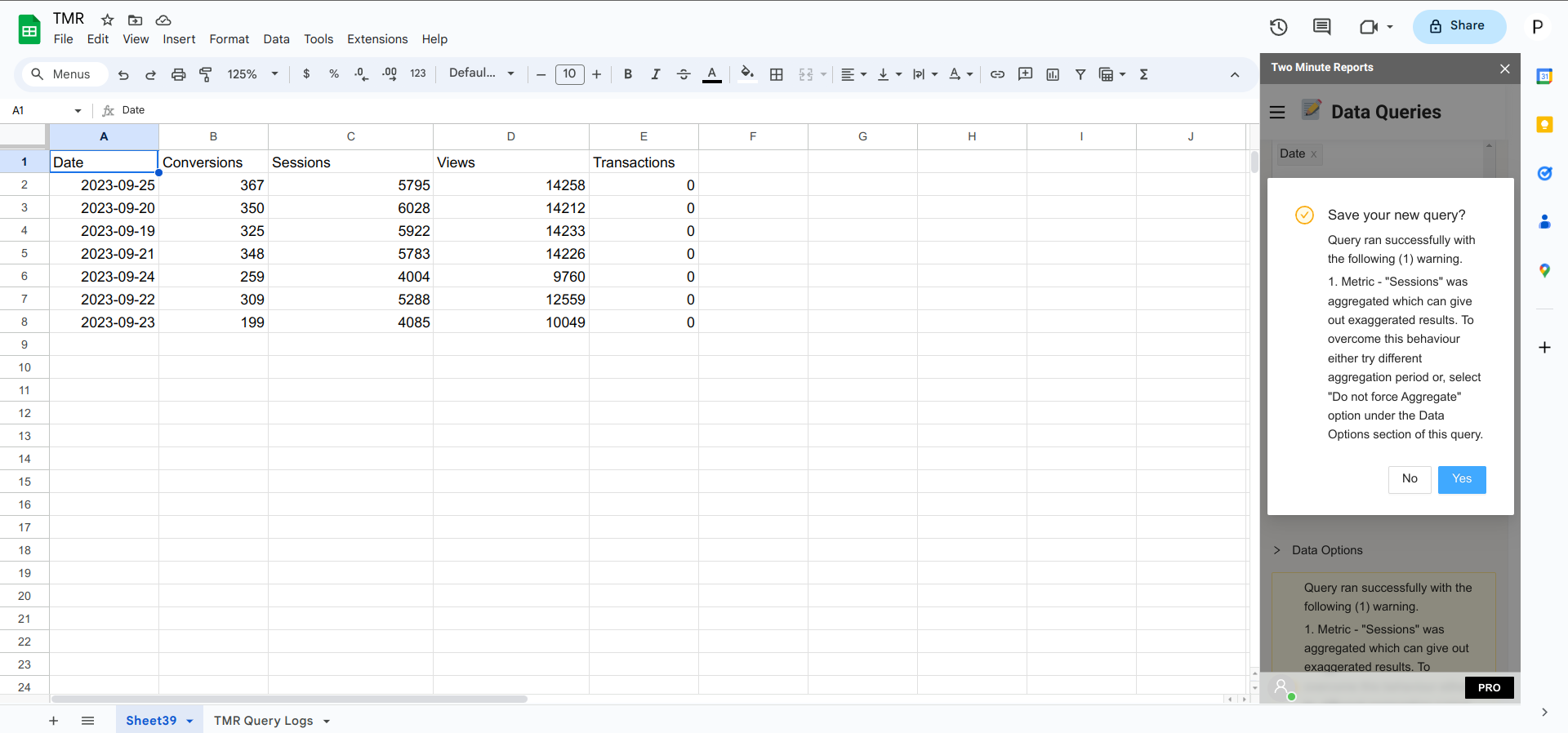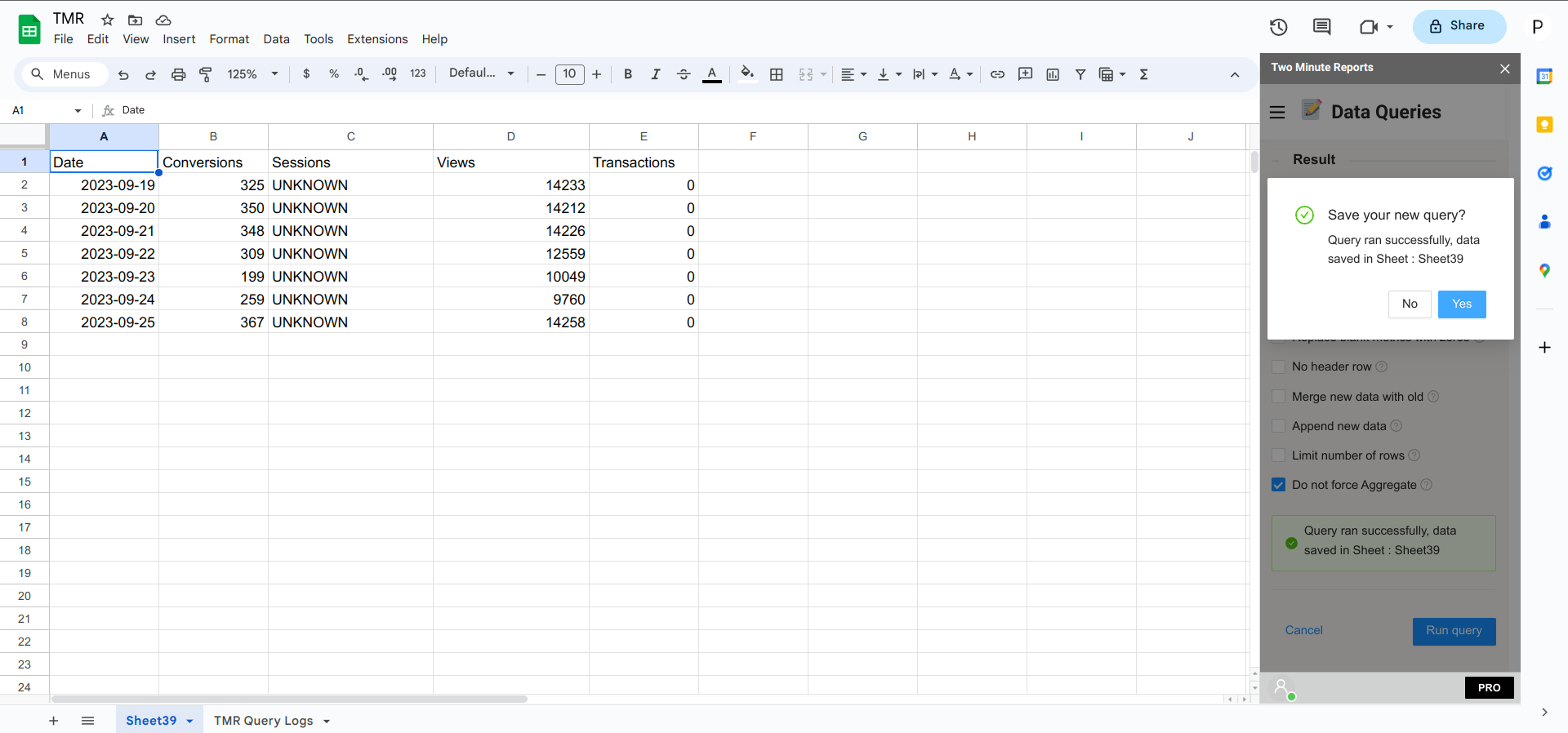This guide explains what non-aggregatable metrics and how it relates to Two Minute Reports with its force aggregate feature.
What are Non-Aggregatable Metrics?
Some metrics are non-aggregatable. Non-aggregatable metrics are metrics that can’t be summed or averaged.
User queries in TMR may contain non-aggregatable metrics, which TMR cannot aggregate by time, account, or any other dimension. This is because they may be unique or TMR does not know the exact formula of these metrics.
Let us consider Google Analytics 4 connector as an example. The data query is set as:
Accounts Views: Property1, Property2, Property3
Metrics: Sessions, Conversions
Dimensions: Date
Date range: Last 7 days
Here we are querying data from 3 GA4 properties and need to aggregate them by date. In this example, Sessions is a unique (non-aggregatable) metric while Conversions is aggregatable. Force aggregate means that metric values across data source accounts are summed or averaged into one.
Results without enabling “Do not force aggregate” option
The below screenshot shows aggregate values of the metrics. This means you are aggregating, or averaging the values of the metrics. TMR by default aggregates all the metrics, irrespective whether the metric is unique or not.
Results after enabling “Do not force aggregate” option
The below screenshot shows actual values of the metrics. This means you are NOT aggregating, or averaging the values of the metrics.
Metrics that are UNKNOWN means that TMR doesn’t know the actual values of these metrics because they may be unique or TMR does not know the exact formula of these metrics.
We hope you liked this guide on force aggregation. If you have any questions please feel free to contact our Support Team.


